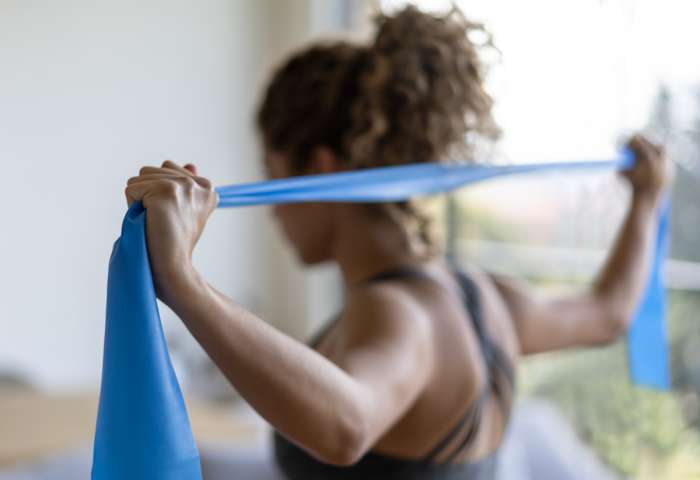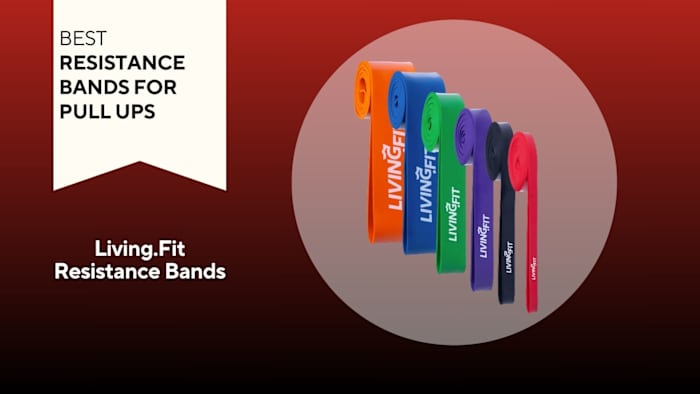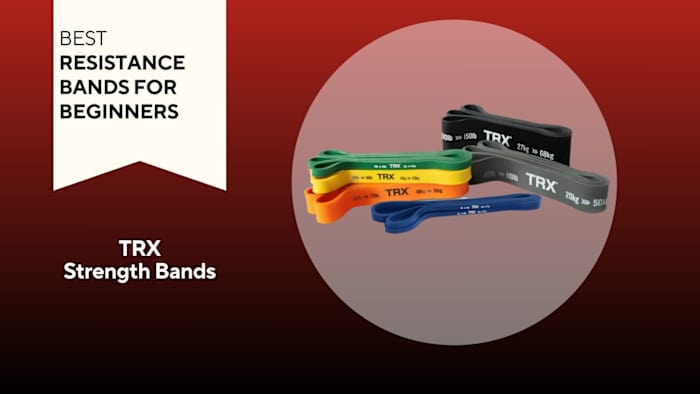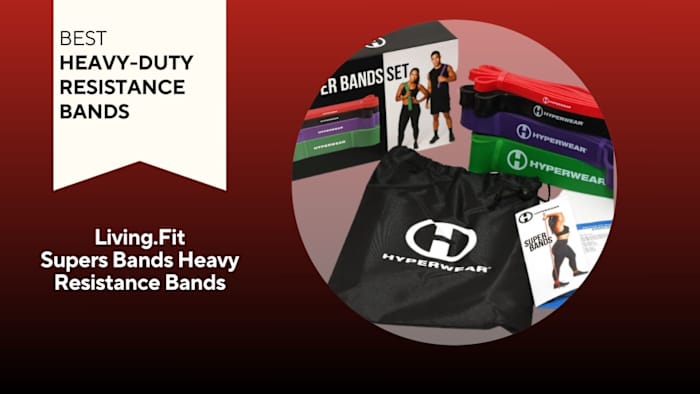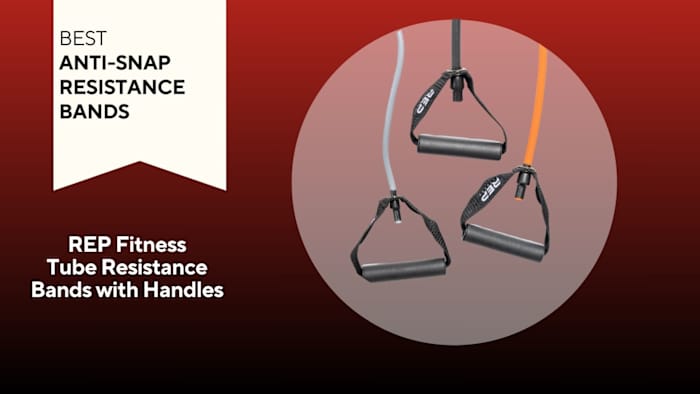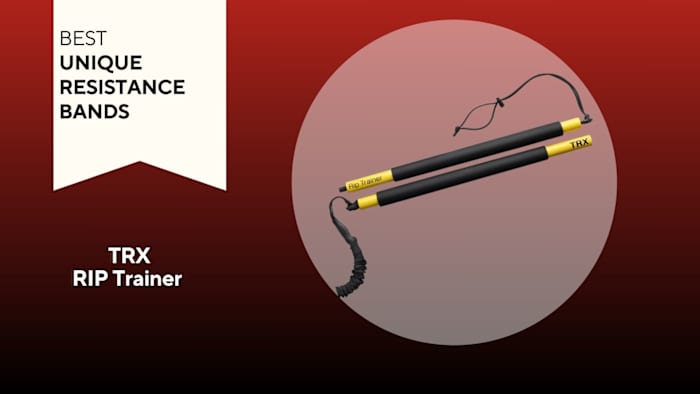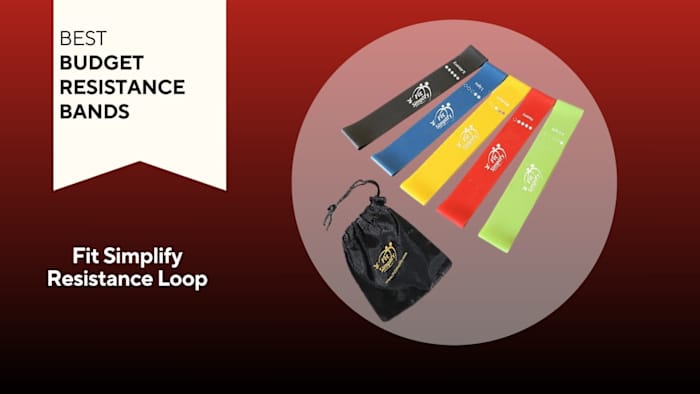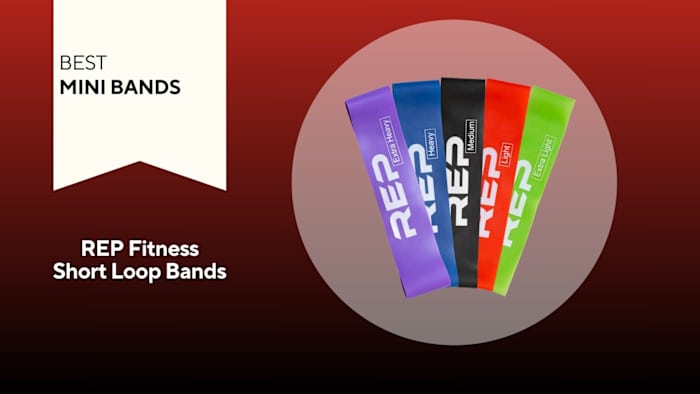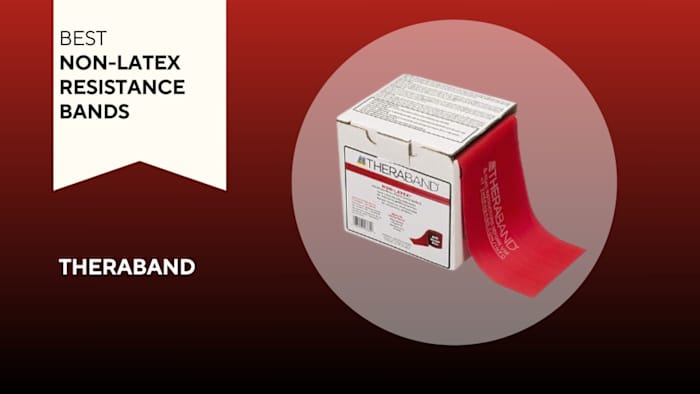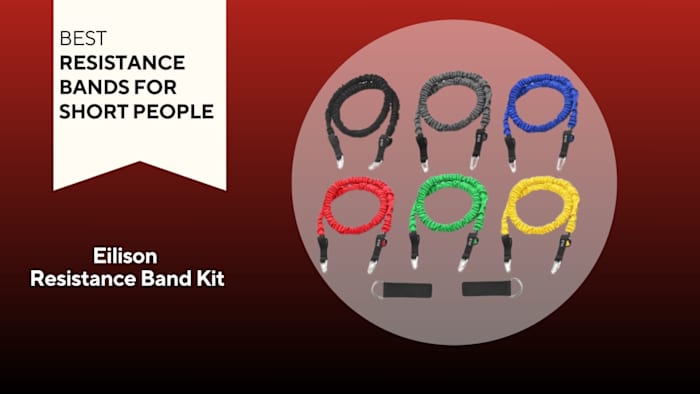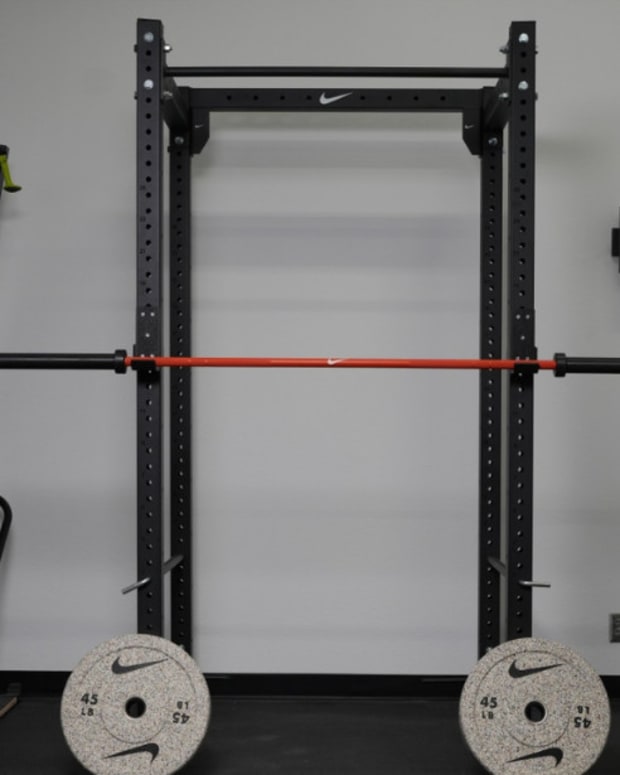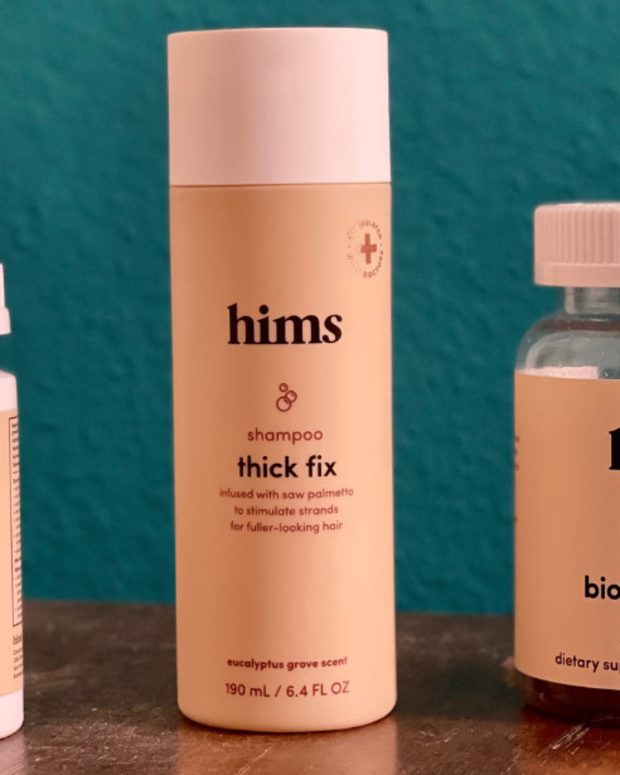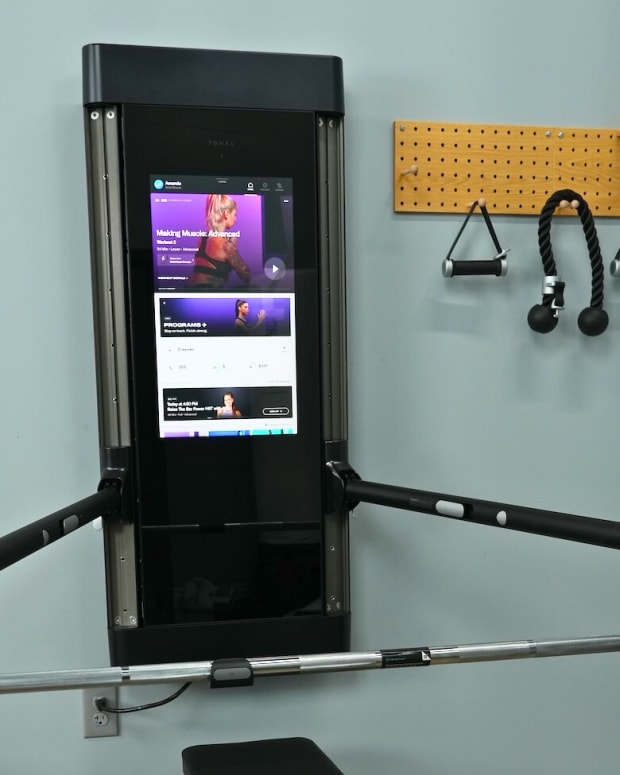The products featured in this article have been independently reviewed. When you buy something through the retail links on this page, we may earn commission at no cost to you, the reader. Sports Illustrated editorial staff are not involved in the creation of this content. Learn more here.
Hear us out: Resistance bands may be the most underrated piece of fitness equipment in your home gym. They’re versatile, portable, affordable and—the best part—they are highly effective training tools. Resistance bands provide similar and more cost effective strength training benefits than free weights/dumbbells. They provide a range of resistance that you can control, allow for a greater range of motion and can be used in speed movements as well as tempo exercises—all of which are at the core of strength training. So toss out the notion that resistance bands are flimsy or ineffective because, quite simply, they are awesome.
There are more types of resistance bands on the market than flavors of Oreos, so deciding on the right ones for your goals can be overwhelming. There are bands with different load capacities, resistance levels, styles, prices and purposes. The most utilized types are loop bands, therapy bands, mini bands and tubular bands with handles. Most are low cost, and all are practical. It’s an understatement to say that you’d be missing out not to add a resistance band set to your training or recovery regime. Beyond training, resistance bands are a phenomenal tool for rehabilitation, improving mobility and stretching. Resistance bands offer older adults a great way to build strength and perform home workouts without the use of gym equipment; only bands and bodyweight required.
So how do you know which resistance bands are the best for you? This review of the best resistance bands will dive into the pros, cons and distinct features of the best resistance bands you can snag right now—plus a comprehensive guide on how to choose the best bands for your fitness or recovery goals.
Our Picks for the Best Resistance Bands of 2024:
- Best Resistance Bands for Pull Ups: Living.Fit Resistance Bands
- Best Resistance Bands for Beginners: TRX Strength Bands
- Best Heavy-Duty Resistance Bands: Living.Fit Super Bands Heavy Resistance Bands
- Best Anti-Snap Resistance Bands: REP Fitness Tube Resistance Bands with Handles
- Best Unique Resistance Bands: TRX RIP Trainer
- Best Budget Resistance Bands: Fit Simplify Resistance Loop
- Best Mini Bands: REP Fitness Short Loop Bands
- Best Non-Latex Resistance Bands: THERABAND
- Best Resistance Bands for Short People: Eilison Resistance Band Kit
Best Resistance Bands for Pull Ups: Living.Fit Resistance Bands
Key Features:
- Price: $29.99
- Style: Loop bands
- Resistance Band Levels: Red (10 to 35 pounds), Black (30 to 60 pounds), Purple (40 to 80 pounds), Green (50 to 125 pounds), Blue (60 to 175 pounds), Orange (70 to 200 pounds)
- Tension Range: 10 to 200 pounds
- Other Accessories: Door anchor
Pros:
- Users can layer bands to increase resistance
- Good range of resistance allows users to perform lots of exercises
- Bands are thick and durable
Cons:
- Resistance level not denoted on bands
- May be difficult to grip thicker bands
Many people aspire to perform a perfect pull-up, but building up to that can feel impossible. In order to start somewhere, you’ll want a band that’s heavy duty enough to support you, but not so heavy duty that you won’t have to work a little bit to perform the pull-up. The Living.Fit Resistance Bands win as the top choice for helping users with their pull-ups because of their looped design (easy to step into and attach to a bar), their variety of resistances (users can opt for a little or a lot of help) and their thick and durable construction that won’t snap or break while supporting you through your workouts.
Ranging in tension from 10 to 200 pounds, the Living.Fit Resistance Bands can be used for a wide array of different exercises, making them a useful tool to add to your workout equipment arsenal.
Best Resistance Bands for Beginners: TRX Strength Bands
Key Features:
- Price: $194.70
- Style: Loop bands
- Resistance Band Levels: Blue (Five to 15 pounds), Green (15 to 30 pounds), Yellow (25 to 50 pounds), Orange (35 to 70 pounds), Grey (45 to 110 pounds), Black (60 to 150 pounds)
- Tension Range: Five to 150 pounds
- Other Accessories: N/A
Pros:
- Extra long 79.5-inch circumference
- Higher maximum resistance levels than others on this list
- Can be stacked for a more customizable resistance level
Cons:
- Expensive
- May roll up during use
These rubber latex resistance bands from TRX come in a wide variety of resistance band levels ranging from xx-lite through heavy. If you've been wanting to incorporate a bit of extra resistance into your workout regimen, starting with these TRX bands is a great way to build up strength and move on to heavier resistance levels. Plus, with the xx-lite band costing less than $10, you won't break the bank. These are full-length bands designed for whole body workouts and come with a one-year warranty.
Best Heavy Duty Resistance Bands: Living.Fit Super Heavy Resistance Bands
Key Features:
- Price: $39.99
- Style: Loop bands
- Resistance Band Levels: Red (15 to 35 pounds), Black (25 to 65 pounds), Purple (35 to 85 pounds), Green (50 to 120 pounds)
- Tension Range: 15 to 120 pounds
- Other Accessories: Carry bag
Pros:
- Bands can be combined for total tension of over 300 pounds
- Super thick and durable design is great for heavy-duty resistance exercises
- Only four bands makes it easy to travel with
Cons:
- Thick width can be difficult to grip
- No light resistance option
If typical resistance bands or tube bands aren’t giving you the resistance you need to get in a solid workout, you’ll want some heavy duty bands that can provide serious tension, and the Living.Fit Hyperwear Super Bands are the best option out there. Affordable, durably constructed and with a uniform length that allows users to compound the bands to increase the tension, these bands are a must-have for anyone who feels they’ve outgrown their current resistance bands. The loop design makes it easy to add these to a pull up bar for assistance or to imitate cable machine workouts. The Super Heavy Bands come with a carry pouch to keep them neatly stored when not in use and are small enough to easily travel with.
Best Anti-Snap Resistance Bands: REP Fitness Tube Resistance Bands
Key Features:
- Price: $21.99
- Style: Tube bands with handles
- Resistance Band Levels: Gray, Orange, Black (in order of light resistance to heavy resistance)
- Tension Range: N/A
- Other Accessories: N/A
Pros:
- Solid construction and design prevents snapping
- Three easily identifiable tension options
- Affordable option
Cons:
- Tension weight not specified
- No additional accessories included
Tube resistance bands are a great option for anyone who wants to maintain a secure grip on their bands while performing exercises, but consumers need to ensure they’re getting high-quality resistance bands that won’t snap under high tension. Enter: the Rep Fitness Tube Bands. These high-quality bands come in three tension levels (light, medium and heavy) from a super reputable maker of fitness equipment, so users can stretch and pull on them as much as needed during a resistance band workout without fear of the bands breaking or snapping. They’re available as a set or individually.
Best Unique Resistance Bands: TRX Rip Trainer
Key Features:
- Price: $229.95
- Style: Weighted bar and resistance bungee
- Resistance Band Levels: Lite, Heavy, X-Heavy, XX-Heavy
- Tension Range: N/A
- Other Accessories: Door anchor
Pros:
- Unique design that’s great for upper body resistance band exercises
- Great for working core
- Includes 60 days to TRX training club exercise program
Cons:
- Expensive
- Limited movements available
If you’re looking for a unique way to improve your fitness (specifically your rotational power), the TRX Rip Trainer is a unique and innovative option that goes beyond the traditional method of using resistance bands. This trainer features a weighted bar, industrial-grade carabiner and bungees in different tension levels to create a totally new way of training with resistance bands. Users grab the car and rotate away from the starting position, engaging their core and upper body as they do so, imitating movements similar to rowing a boat, swinging a racket or bat or other rotational movements. The bar is made of two pieces so you can easily store it in your gym bag for on-the-go training. The result is a full-body workout that uses a variety of muscle groups and improves stability and balance as well as body strength and power.
Best Budget Resistance Bands: Fit Simplify Resistance Loop
Key Features:
- Price: $20.95
- Style: Loop bands
- Resistance Band Levels: Green (two to four pounds), Blue (six to eight pounds), Yellow (10 to 12 pounds), Red (15 to 20 pounds), Black (25 to 30 pounds)
- Tension Range: Two to 74 pounds
- Other Accessories: Carrying bag, instruction booklet
Pros:
- Can be used for upper and lower body exercises
- Easy on your wallet
- Lightweight and portable
Cons:
- Natural rubber may pinch or roll up
- Not as durable as others on this list
Finding a quality product at a low cost is an all-around win. Fit Simplify Resistance Loop bands are a solid budget-friendly choice for anyone looking to snag a set of resistance bands without eating into their bank account. Made from natural rubber, the Fit Simplify Resistance Loop Band comes in five different resistance levels that are color coded. The band measures 12 inches long and 2 inches wide, but the thickness varies based on the resistance it offers.
Whether you’re a seasoned athlete or just starting out your fitness journey, the extra light to extra heavy range of resistance can work for just about everyone. If you’re unsure where to start, Fit Simplify provides an instruction booklet with every purchase. These lightweight resistance training tools are portable, and, thanks to the free carry bag included with your order, it’s easy to bring them anywhere you want to sneak in a strength, mobility or stretch session.
The Fit Simplify Resistance Loop bands may also be used as part of a rehabilitation program while recovering from an injury. Often used in physical therapy sessions, resistance bands work to target stabilizer muscles and improve mobility.
Best Mini Bands: REP Fitness Short Loop Bands
Key Features:
- Price: $15.99
- Style: Small loop bands
- Resistance Band Levels: Green (extra light), red (light), black (medium), blue (heavy), purple (extra heavy)
- Tension Range: Can stretch 2.5 times in length
- Other Accessories: Band pegs, exercise mat
Pros:
- Small and lightweight making them easy to take with you
- Perfect for recovery movements as well as strength training
- Good for senior fitness and mobility
Cons:
- Must be purchased as a set, so you can’t pick and choose which sizes you want
Mini bands are an excellent tool to add to any warm-up or cool-down routine; they offer just enough resistance to aid in mobility or small muscle group work but not so much that you’ll feel depleted after use. The REP Fitness Short Loop Bands are a great, affordable set of small loop bands that you can take with you wherever you exercise. The heavier bands can be used for upper body exercises or for lateral steps, while the lighter bands are ideal for warming up the body. These are also some of the best resistance bands for seniors, adding the right level of tension for an easy way to improve upper body strength.
Best Non-Latex Resistance Bands: THERABAND
Key Features:
- Style: Therapy bands
- Resistance Band Levels: Yellow (Three pounds), Red (3.7 pounds), Green (4.6 pounds), Blue (5.8 pounds), Black (7.3 pounds), Silver (10.2 pounds), Gold (14.2 pounds)
- Tension Range: Three to 14.2 pounds
- Other Accessories: N/A
Pros:
- Each box contains 25 yards of elastic that can be cut to size
- Gentle resistance is good for beginners or rehabilitative exercises
- Safe for those with latex allergies
Cons:
- Not as effective for muscle gain as bands with greater resistance
- Prone to rolling up or getting tangled in hair
If you suffer from a latex allergy or simply prefer non-latex products, the THERABAND resistance bands may be for you. Made from all-natural rubber, this set includes seven color-coded resistance levels—each with its own range of weight provided. The yellow band offers around three to four pounds of resistance, the red offers around four to five and a half pounds, and the green offers four and a half to six and a half pounds. The highest resistance band (gold) offers 14.2 pounds of resistance. You’re also likely to appreciate that the non-latex rubber doesn’t pinch skin when performing exercises.
Each THERABAND roll measures 25 yards long and 5.5-inches wide. The ability to cut the elastic band to the size you need lends itself to a large variety of exercises. Use THERABAND for yoga, pilates, strength training, rehabilitation or stretching to enhance mobility and strength. In comparison to other resistance bands, these don’t offer as much resistance. They’re more often used to work stabilizing and small muscles, as well as to improve range of motion. You’ll likely find THERABAND is used in most physical therapy sessions for rehabilitative purposes.
Best Resistance Bands for Short People: Eilison Resistance Band Kit
Key Features:
- Style: Fabric-wrapped tube bands with handles
- Resistance Band Levels: Black (10 pounds), Grey (20 pounds), Blue (30 pounds), Red (40 pounds), Green (50 pounds), Yellow (60 pounds)
- Tension Range: 10–210 pounds
- Other Accessories: Two door anchors, two ankle straps, four cushioned foam handles, one carrying bag, one workout guide book
Pros:
- Bands can be layered to provide extra resistance
- Protective nylon sleeves for protection if tubing snaps
- Made with eco-friendly natural latex
Cons:
- Not long enough for taller individuals
- Bulkier than other bands on this list
Measuring approximately five-feet long, the Eilison Resistance Band Kit is our top pick for shorter people. Here’s why length matters when it comes to resistance bands: If a band is too long (or the user very short), the band won’t stretch enough to provide its intended level of resistance. Consider a bicep curl; someone who is five-feet tall will experience much less intensity curling a band that’s too long for them than would a six-foot tall person using that same band. At five-feet long, the Eilision Resistance Band Kit is short enough to offer a meaningful load intensity for shorter athletes.
Made from eco-friendly natural latex, the Eilison bands are durable and can withstand strong extension. These bands come with a heavy duty protective nylon sleeve that protects users from getting hurt should the band break from being overstretched. That said, the length is limiting and not suited for taller individuals.
The Eilison Resistance Band Kit includes 13 pieces: six resistance bands, two door anchors, two anti-slip foam handles, two padded ankle straps, one carrying case and one workout guidebook. Each band is color-coded for easy identification of resistance level, and the accompanying metal carabiner can be used alone or stacked in any combination up to 210 pounds of resistance. This kit is suitable for any fitness level and a wide variety of exercises. Whether you plan to use them for chest presses, squats or a full body exercise routine, this kit will get the job done.
How Do Resistance Bands Work?
Resistance bands all share one defining characteristic: as the range of motion increases on any given band, so does the resistance load. Think of it as a giant elastic band. For example, when performing a shoulder press, you must control the band as you move your arms overhead and the resistance gets progressively harder.
Unlike free weights, resistance bands provide continuous tension throughout the entire range of motion. The inherent properties of rubber/elastic encourage the muscles to remain engaged throughout the whole movement, whereas free weights do not. If you want the best of both worlds, resistance bands can effectively be added to free weight training for a more significant strength gain.
Related Post: The Best Ab Machines for Your Home Gym
Types of Resistance Bands
Depending on your goals for resistance band use, there are several types to choose from. To help you figure out which type is best for you, we’ll explore them here and show how they can be used.
Loop Resistance Bands
Loop resistance bands are one of the most versatile tools you can add to your workout routine. They are small enough to toss in a carry bag and take with you anywhere. Sold both individually and in sets, loops are color coded by resistance level. These bands are most often used to activate and strengthen small muscle groups.
Lighter level resistance bands lend themselves to exercises that wake up and engage small muscles prior to and during a workout. When used correctly, they can even add additional resistance to improve endurance and the strength of stabilizing muscles. For example, before heading out for a run, a loop band can be used to activate the glute with exercises like single leg abductions or deadlifts. A simple Google search will yield a ton of guides on activation workouts.
Medium resistance bands are good for targeting specific singular muscle groups like triceps and biceps. You can use them for curls, tricep pull downs or face pulls—among countless other exercises. They also make Medium bands also make a good addition to traditional strength training with a kettlebell or dumbbell.
Heavy loop resistance bands can be used to work large muscle groups such as legs, chest and back. The heavier resistance is great for chest press, resisted push ups, assisted pull ups, deadlifts, squats, overhead press and lat rows. Again, Google is a great resource for finding a seemingly endless list of exercises. The best loop resistance bands can be used entirely on their own or added to weights for additional resistance.
Tube Bands With Handles
Tube resistance bands are typically constructed with a longer tube measuring around 4 feet or more. They come with an anchor point and two plastic handles on each end. Tube bands often use a carabiner mechanism to anchor them, which allows you to stack multiple bands for greater resistance.
Tube bands are great for training the entire body. Whether you use them in pushing movements (such as chest press and overhead press) or in pulling movements (such as lat or supine rows), you’re able to tailor the resistance, adding more as your strength increases.
Therapy Bands
As the name indicates, therapy bands are most often used for rehabilitation. They have a flat surface, are typically made from latex and are used to rehabilitate problems with functional movement. They’re easy on your body and work well to target stabilizing muscles. Physical therapists use these in a variety of exercises to improve your structural balance.
Mini Bands
Mini bands are technically a subgroup of loop bands. Similar to the therapy bands, mini bands have a flat surface rather than tubular. Typically, mini bands do not provide as much resistance as tubular or longer, thicker loop bands. Don’t be fooled, though—you can still get a killer full body workout with mini bands.
To train your lower body, here are just a few of the many exercises that target legs, hips and buttocks: single leg bridges, banded squats, standing kickbacks and banded side steps. Want to engage your core? Use the mini bands to perform plank kickbacks or banded bicycle ab crunches. Last but not least, some exercises that work your upper body include banded push ups and archer pulls.
Mini bands are also used for stretching and mobility work due to their inherently smaller size and lighter resistance.
How Do I Choose a Resistance Band?
In order to choose the right type of band, you need to identify your skill level and how you plan to use your bands. For example, if you’re training for a marathon and want to add some muscle activation exercises before lacing up, mini bands and lightweight loop bands best suit your needs. If you’re looking to add resistance bands to your weight training regime or as a stand-alone tool to gain strength, tubular bands with handles or medium-to-heavy resistance loop bands work much better than would a therapy or mini band.
If you're looking to add some resistance to your next walk, check out our Best Ankle Weights roundup.
What Else to Look for in Resistance Bands
Length
Resistance bands come in a variety of lengths. Depending on the type and brand, lengths can vary from several inches to several feet long. The length of the band is important for two reasons: First, if you’re an extremely short or tall individual, you want to ensure the length is proportional to your height. If you have a band that’s too short, it likely won’t provide enough elasticity for most movements. On the other hand, a band that’s too long won’t be tight enough to provide the resistance that you need or want. If you’re not sure about what length to choose, we recommend choosing a longer band. Most resistance bands can be tied or wrapped to shorten the band.
Material/Design
Not all resistance bands are created equal. Most are made of some kind of rubber or elastic-like tubing. Different materials have different quality levels, which affects the lifespan of your bands. A resistance band, by nature, stretches during use, and if the material is poor, the bands could overstretch and tear. Natural rubber latex is your safest bet.
Some bands come with a nylon sheath over the inner tubing. These resistance bands are made to stand up against the test of time as the nylon prevents overstretching. If the band should break, the nylon cover protects you from any snapback.
Cost
In addition to considering your intended use of a band, knowing your budget before you begin your search is critical. Resistance bands can be found at every price point, sold both individually and as sets. Don’t waste your time looking at a set that you can’t afford. Budget-friendly resistance bands can be just as durable and effective as expensive ones.
Resistance Bands FAQs
Are resistance bands bad for your joints?
No. Resistance bands can be used for low impact strengthening exercises, and are often used by physical therapists. In one 2020 study, exercising with elastic bands three times a week for four weeks reduced pain among those with degenerative knee arthritis.
Can resistance bands build muscle like weights?
Yes, resistance bands can build muscle just as well as weights. A 2019 meta-analysis reviewing studies that compared muscle gain while using bands or weight machines and dumbbells reported no significant difference in muscle gain between the two.
Are fabric or elastic resistance bands better?
Fabric bands and elastic bands can both provide you with an effective resistance workout, but fabric bands tend to be more comfortable, while elastic bands are more versatile.
How long do resistance bands last?
The lifespan of your resistance bands depends on how often they're used. A general rule of thumb is to replace your bands every six months to two years. You should replace your bands if they stretch out, the material begins to fray or you notice changes in the shape or color of the band.
The Takeaway
Resistance bands are an underrated training tool that effectively work to improve strength, mobility and even endurance. Their versatility, small size and low cost make them a great addition to any home gym or workout routine. If you’re planning on integrating resistance bands into your training and recovery routine, there’s a lot to consider. Fundamentally, all resistance bands work the same: As they are stretched out, the resistance load increases. However, they vary greatly in design, material and price, so it’s important to know how you intend to use them before you buy.
Prices are accurate and items in stock at time of publishing.
